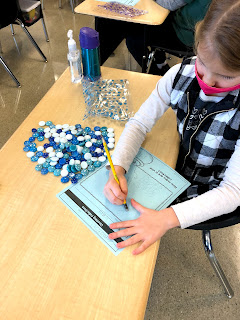It has been a crazy, stressful year. The good news is that the end is in sight for this school year. And, while we may still live with some restrictions when our new year arrives next fall, we anticipate that many things will return to a more typical format for instruction.
So--let's look with next year in sight. I know your summer is looking promising. You can't wait to just relax and enjoy all that the world has to offer without the weight of instruction on your mind. However--I imagine, like me, you find it difficult to totally turn off school. Here are some things you might consider looking into to grow as a math teacher for next year. Think about these best practices. Which ones seem reasonable for you as you continue on your math journey? You might choose two; you might choose seven. Do what works for you.
Daily Routines: Using the beginning moments of your workshop to get everyone thinking around an interesting problem is a great way to get the juices flowing! I would definitely include traditional number talks in these routines, but there are so many others to consider. Look for low floor/high ceiling routines that allow all students to enter into the problem and encourage creativity and fun for all.
More Manipulatives: CRA Instruction "puts math in students' hands so they can understand it with their heads." All students benefit from this type of instruction, but sadly, we tend to move away from it too quickly. It is one of the best ways for students to gain conceptual understanding of concepts.
Numberless Word Problems: Key words are cancelled. They are not a good instructional practice because they do not encourage good thinking from our students. Taking some time to think around word problems that do not have numbers is a fabulous strategy for our students. It not only shows the link between reading skills and math context, but it puts another tool in our students' toolboxes that they can use when they are confused by a word problem. Remove the numbers!
Counting Collections: The counting collections activity is way more complex than just counting, but it is also as simple as just counting. The CGI approach is really working hard in this activity that I love to use from K to 5th! (It could be used with older students, too!) It is an in-action practice of concrete, representational, and abstract. This can be done by individuals or in pairs, but as always, the sharing at the end is where the real learning occurs! You do not need anything fancy to count, so don't feel like this is something you have to go out and buy materials for.
More Visuals: Math is visual. Find ways to help students SEE the math in everything you do. From representations during Number Talks to counting aloud visuals to the Same/Different routine to Prime Climb or Tiny Polka Dot, put the math out there in a way that students can engage with and understand. Visuals help all students to engage and step-in to the lesson.
Three Act Tasks: These offer such a good opportunity for our students to make sense of math, and they do not follow the "I do, we do, you do" instructional format. There are so many available to choose from. The tab at the top of this blog is a rabbit hole that will take you to quite a few. How can you be more intentional about using them next year?
Heterogeneous Grouping: Tracking students is not an equitable practice. All students need the opportunity to see and do high level tasks. Let's not limit our students. Be more intentional about grouping your students with students of varying strengths. Don't underestimate what your students can do.
More Incorporation of Data: Jo Boaler has added resources to her Youcubed website around data. SlowRevealgraphs.com has a number of prepared slide decks for many different levels. These can be used in math class or incorporated into content areas. Teaching our students how to read, question, interpret, and create various data representations is an important 21st century skill.
Desmos: This platform offers so much for students, but also for teachers! The platform is manageable and you can find a large number of ready-made activities that go beyond DOK 1 on this site. I have many listed and aligned by standard in the Resources to support CCSS tab at the top of the page.
Weeks of Inspirational Math: I have blogged about this more than a few times. 1st time 2nd time 3rd time I love these! I believe strongly you will, too, and so will your students.
Puzzles: Our students do not have enough experience with persevering through challenging problems, and puzzles (both paper and tangible) give them experience with this skill. Maybe you just add a jigsaw puzzle table next year, or maybe you take on KenKens--either way, your students will grow! (and probably have a little fun along the way)
Each year, we step into our classrooms with a fresh start and with plans of doing better than the year before. By challenging yourself to grow in your math instruction, you will not only grow, but so will your students! Good luck.



